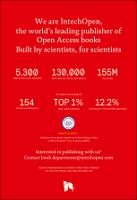Chapter Lidar Mapping of Near-Surface Aerosol Fields
Author(s)
Dreischuh, Tanja
Grigorov, Ivan
Peshev, Zahary
Deleva, Atanaska
Kolarov, Georgi
Stoyanov, Dimitar
Language
EnglishAbstract
Near-surface atmospheric measurements over urban or industrial areas aimed at assisting the air-quality monitoring attain increasing societal significance due to the strong and direct impact of aerosol pollutions in the low troposphere on the human health. In this chapter, we present experimental results on lidar mapping of aerosol fields over the city of Sofia (Bulgaria), its suburbs and adjacent towns and villages, obtained during an extensive 7-month experimental campaign in 2015. The measurements are conducted by scanning observation zones in horizontal and vertical directions using lidar systems developed at the Institute of Electronics, Bulgarian Academy of Sciences. Based on the aerosol backscattering profiles retrieved at different azimuth or elevation angles, two-dimensional color-coded sector maps of the near-surface aerosol density are obtained, overlaid on the topological map of the Sofia region. The analysis of the lidar maps shows good correlation between the aerosol density distribution and the locations of important sources of aerosol pollutions in the zones of observation, such as city streets with intense traffic, industrial facilities, densely populated residential districts, etc. The results reported demonstrate that aerosol lidar mapping could be regarded as an effective approach for accurate and reliable determination of the density, spatial distribution, and temporal dynamics of close-to-ground aerosols, covering broad urban areas. Possibilities of incorporating synergistically lidar mapping technologies into municipal air-quality monitoring systems are also discussed.
Keywords
aerosol, lidar, scanning lidar, near-surface aerosol lidar mapping, air-quality monitoringDOI
10.5772/65274Publisher
InTechOpenPublisher website
https://www.intechopen.com/Publication date and place
2016Classification
Environmental monitoring


 Download
Download